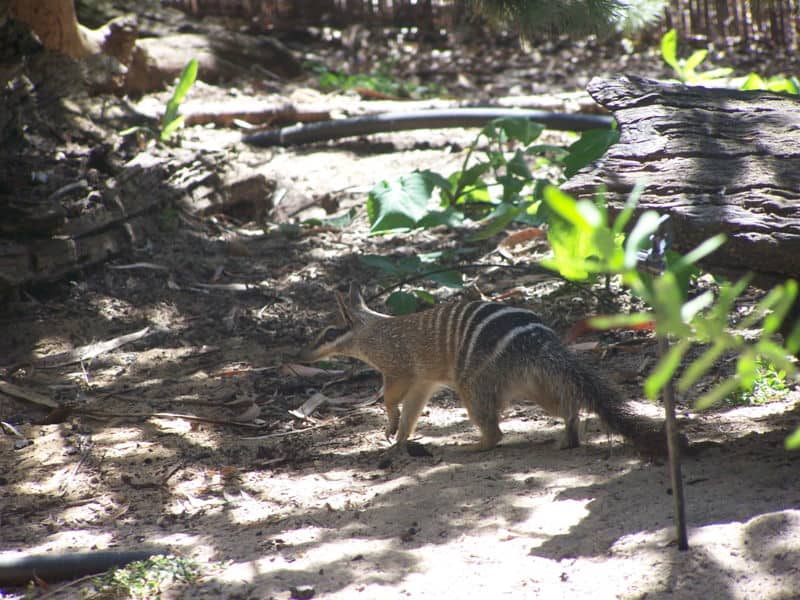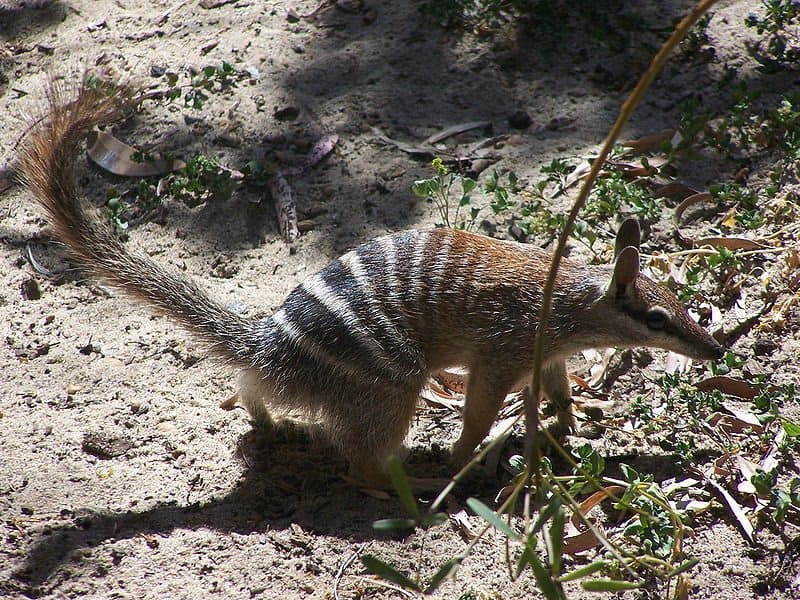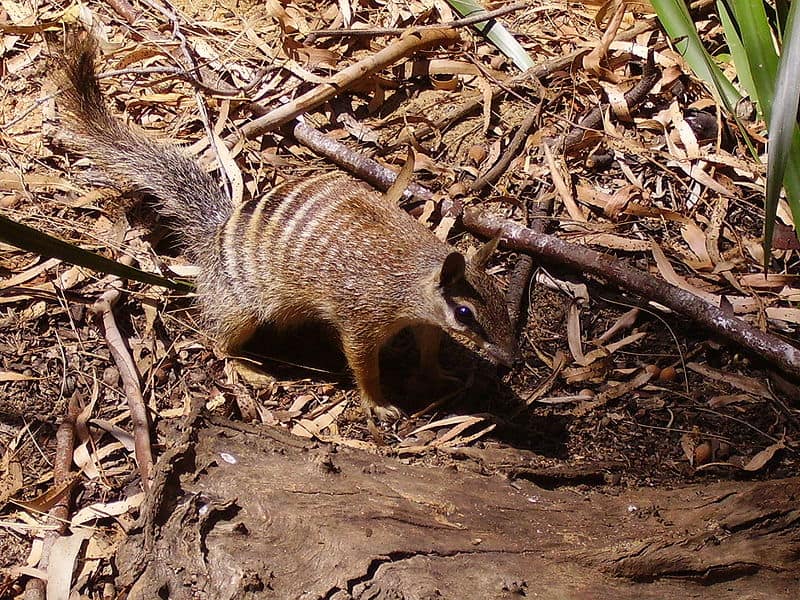
The numbat is Western Australia’s official faunal emblem.
©EQRoy/Shutterstock.com
The numbat, also known as the walpurti, is scientifically known as Myrmecobius fasciatus. This species of diurnal marsupial feeds primarily on insects, mainly termites. Once widespread over Southern Australia, the species is now confined to a few isolated colonies throughout Western Australia. Conservation efforts ensure its safety as an endangered species. New South Wales and Southern Australian numbats have recently returned to their respective fenced reserves. The numbat is Western Australia’s official faunal emblem. Keep reading to learn 10 incredible Numbat facts!
1. They Are Sometimes Known by Another Name
The fact that it looks so much like a raccoon and a squirrel has led to mistaken identity. It is even referred to as the banded anteater on occasion. The numbat is a species of marsupial native to Australia that is in a state of critical endangerment.
2. They Have Sharp Claws for Digging

Numbats drill holes in the ground to access termites.
©Ken Griffiths/Shutterstock.com
The numbat drills very small holes in the ground to obtain access to the galleries in the termite colony, which are the entrance and exit points for the insects. Unfortunately, unlike many other creatures, numbats do not have robust jaws or teeth. In fact, these creatures do not have teeth at all, instead growing “pegs.” These blunt, teeth-like segments are not sharp, since they do not chew their food but rather swallow it whole.
3. Numbats Are Actually Fairly Fast
Numbats can avoid danger thanks to their quick reflexes and ability to climb trees while clinging to the bark with their sharp claws. In fact, when time is of importance, numbats are capable of speeds of up to 20 miles per hour.
4. Numbats Are the Only One Left in Their Genus

Numbats vary in color, from soft gray to reddish brown.
The numbat is the only member of its genus that is still alive; it is a mammal that belongs to the family Myrmecobiidae and is the only living representative of its family. Regarding the animal’s ancestral lineage, our knowledge is extremely limited. Cave deposits dating back to the Pleistocene Epoch can be found in Western Australia and New South Wales. These caves are home to the only living species of numbat.
5. Their Ancestors Are from Millions of Years Ago
Although it was related to other extinct marsupials through a common ancestor, its monotypic family is now placed in the order Dasyuromorphia, which is comprised of a vast range of carnivorous mammals belonging to the family Dasyuridae. Genomic research has revealed that the ancestors of numbats became distinct from those of other marsupials somewhere between 32 and 42 million years ago, during the late Eocene Period.
6. Unfortunately, They Are an Endangered Species
The Dryandra Woodland and the Perup Nature Reserve in Western Australia are the only areas in the wild where this species has managed to maintain a viable population. However, since Europeans began to live in the region, there has been a significant reduction in variety.
Because of this, the species is now in a state of critical endangerment. It is estimated that there may be fewer than one thousand mature individuals left. Both the massive destruction of their habitat and the hunting of these animals by wild carnivores have played significant factors in the species’ dwindling numbers.
7. They Are Insectivores
Numbats, which are classified as insectivores, obtain all the necessary nutrients from their diet of termites. To satisfy their nutritional requirements, they swallow as many as 20,000 termites in a single day. After excavating its victims from the ground with its front claws, the animal seizes its meal with its long, sticky tongue.
8. They Are Fully Active by Day
The only species of marsupial that is known to be active during the day is the numbat. During the day it spends most of its time searching for termites. Australia recognizes it as a special and endangered species due to its rarity. In fact, the numbat was given official recognition as the representative mammal species of Western Australia in the year 1973.
9. Numbats Have Long, Sticky Tongues
Because of the length and stickiness of their tongues, it is easy for these creatures to pick up termites and consume them. The tongues of numbats are approximately 10 to 11 centimeters in length, making it easy for them to flick into holes and into tight locations such as fallen leaves and logs.
10. Numbats Have Small, Blunt Teeth

Numbats have surprisingly strong claws for their size.
Even though numbats’ teethlike pegs are rather little and may give the impression of being degenerated, they are in fact polyprotodont, having three lower and four upper incisors on each side of their jaws. The numbat has an abnormally small number of “teeth” that are not fully functional.
The photo featured at the top of this post is © Ken Griffiths/Shutterstock.com
Sources
- Project Numbat, Available here: http://www.numbat.org.au/thenumbat
Thank you for reading! Have some feedback for us? Contact the AZ Animals editorial team.








